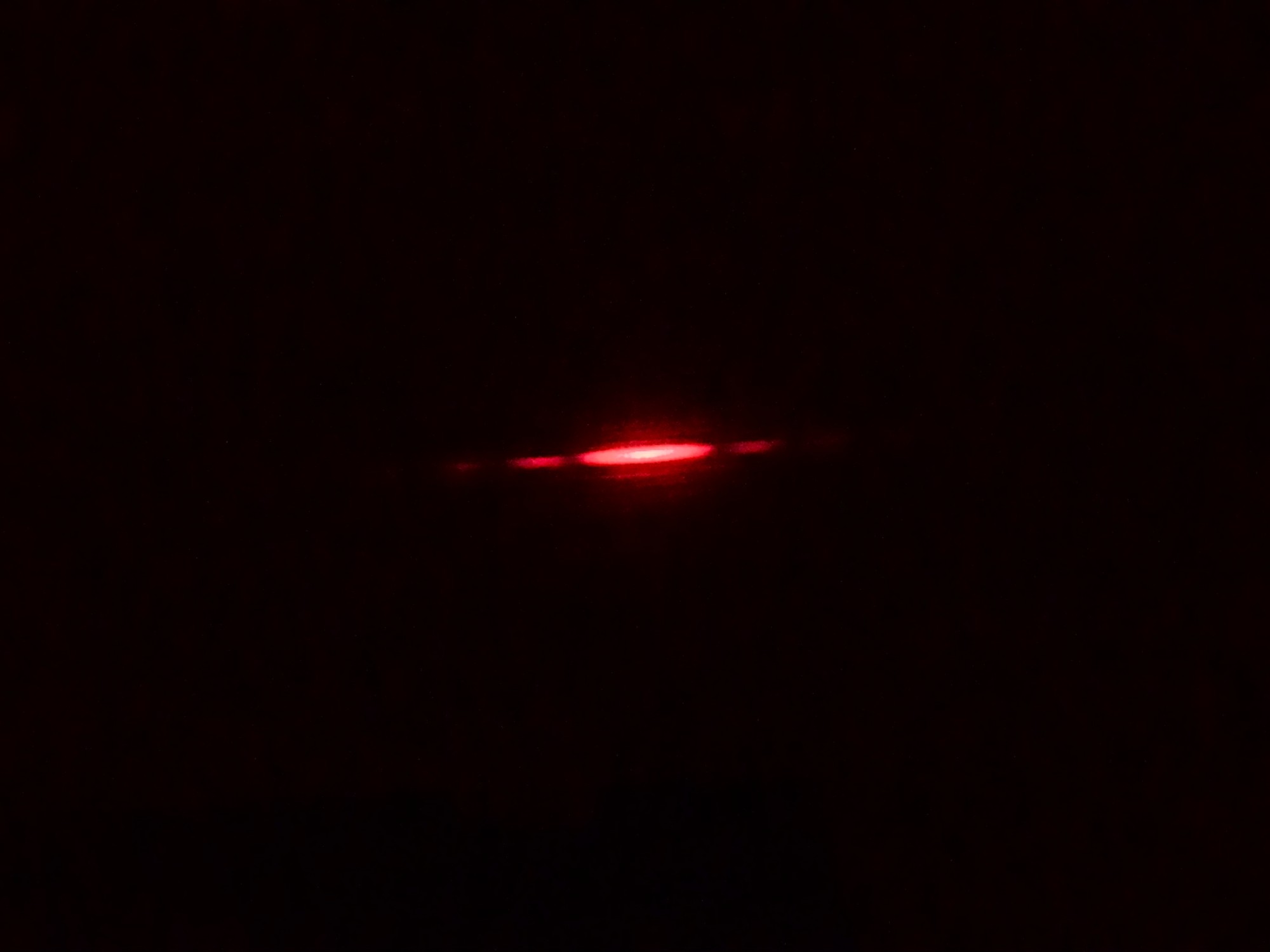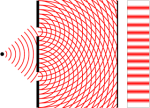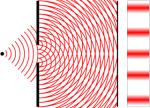This blog entry is for the experiment on Interference and Diffraction experiment.
I want to start talking about the experiment but i want to share my experience last Monday morning. So i woke up 4 am because i wanted a very long hot bath before going to school. nothing so special that day i really just wanted one. And so i did, it was amazing hahaha. I ate breakfast and fixed my things (prepared for school basically) then planned the house at around 6:45 am. Even though this was a Monday morning i believed that an hour and a quarter was enough for me to go to school. until a series of commuting disasters happened. It all started the trike i called didn’t arrive so i wasted 15 mins of my time waiting. I told my dad to drive me and drop me off at the gate of the subdivision. At that time I was in no mood to commute so I waited for a cab, after 5 mins I believe that I will be late if I continue to wait for nothing. So I got in a jeep (which took another 7-10~ mins of waiting. When I got down at Commonwealth Avenue I was shocked to see an ocean of people waiting for a ride. What’s worse is that all the cars that pass were full. Like only one will go down and one can go up as well. Many of them decided to sabit but I had zero intentions of doing so. All the cabs had passengers already and all the fx’s and jeeps as well. I waited there for an hour and or so. It was a legit commuting disaster that by 8 am I was still there and my parents going to work already left the house by then. So they decided to just pick me up and bring me to school. I was so stressed at everything that is why I was slightly less energetic than normal. But oh well it was physics lab. I still had fun.
Ok let me start talking about the experiment. We know that light acts both as a wave and a particle (if you dont know this u gotta start listening to your science teacher). Light waves interact with each other in a way that is simple yet so cool to learn.
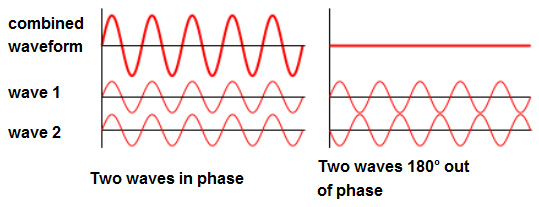
The figure above shows the possible result of waves combining.
Now let’s think about what happens if we let light pass 2 slits. If we only viewed light as particles we would assume the figure below to be true.
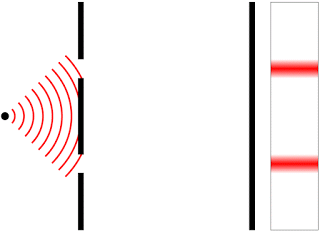
This however is not the case we observe when the experiment is done. We actually observe alternating fringes of dark and light bands. We even observe this even for just one slit.
This pattern we observe is due to Huygen’s Principle which states that:
Every point on a wave-front may be considered a source of secondary spherical wavelets which spread out in the forward direction at the speed of light. The new wave-front is the tangential surface to all of these secondary wavelets.
The slits acted as the new source of waves thus the pattern we observe.
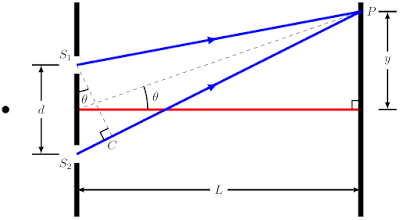
The figure above shows the relative positions of light and dark bands.
d – is the distance between the two slits
L – is the distance between the slits to the plane of projection
y – is the height of the point from the center of the slits
θ – is the angle created by the projected band to the center
As taught in physics 103 lecture, constructive interference happens when the difference of the distances from the sources to the point on the screen (P) is given by kλ, where λ is the wavelength and k is any integer. Destructive interference happens when the difference of the distances said are given by the equation k(λ/2), where k is any odd integer.
Since it is difficult to actually measure the distances from the slits to the point we can use geometry to confirm that the difference is almost equal to d sin θ.
we can equate it now to the said relationships to λ
for constructive interference:
 (1)
(1)
for all k element of the set of all integers.
for destructive interference:
 (2)
(2)
for all k element of the set of all integers.
from this relation and other things we generally know from our basic knowledge of geometry we get
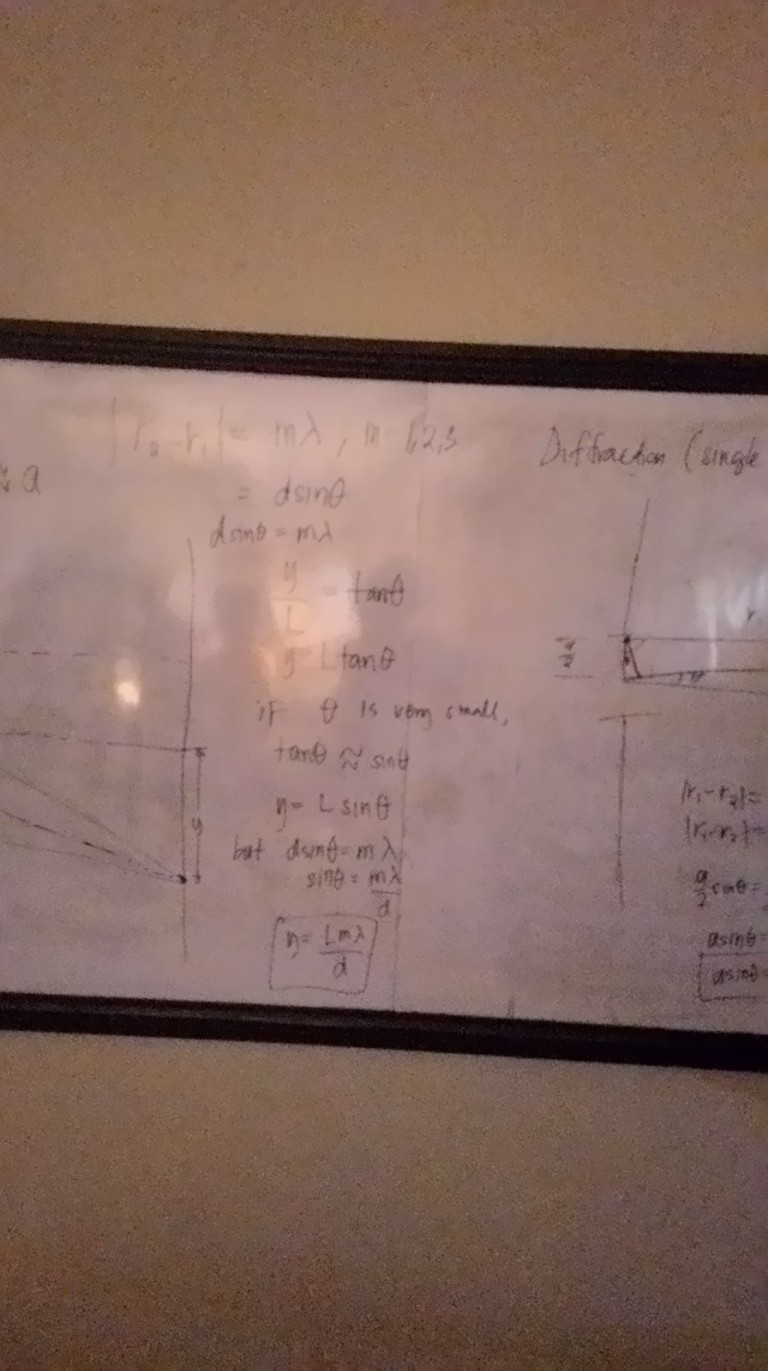
now let’s talk about the experiment.
We essentially did Young’s double and single slit experiment.
For the first part we did the single slit diffraction. We set up the materials based on the instructions on the manual. A white sheet of paper was mounted on a box we placed a distance L from the single slit disk. The the slit width was selected and the laser was adjusted so it would hit the slit directly. The boundaries of the dark fringes were marked and distance between side orders and center to side was obtained with a ruler. From the data, we obtained the wavelength and slit width and compared it to the actual wavelength/width. For the double slit experiment what we did was counted the number of fringes between the dark bands. From these, we obtained the slit separation.
here are pictures of the observed patterns for single slit
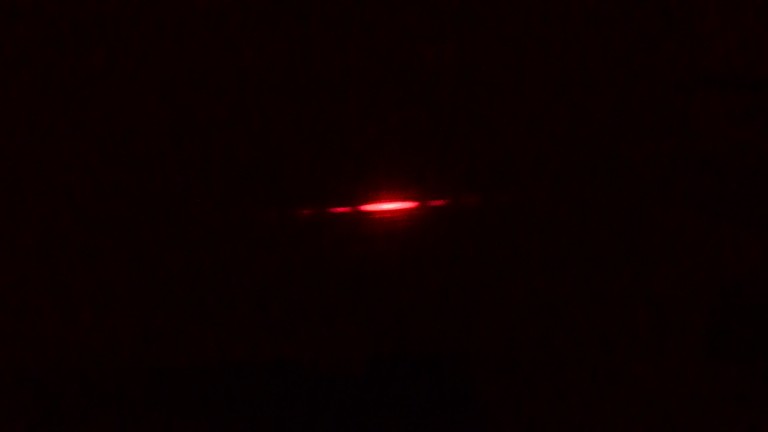
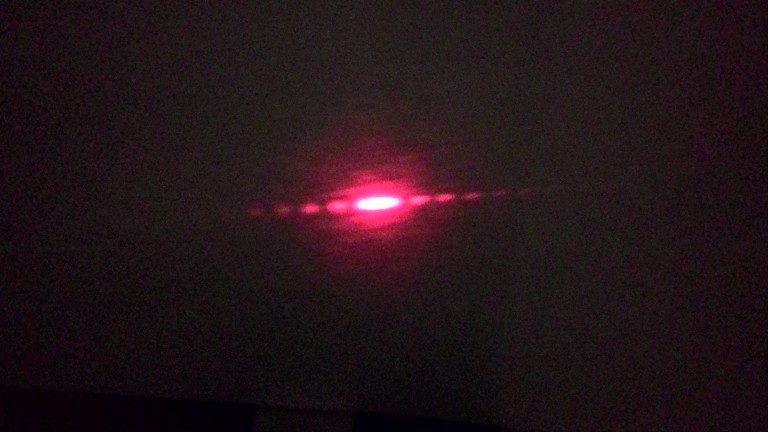
It was observed that as the slit width increases the distance between the dark bands were less. It was also observed that as you go further from the center the intensity of the light decreases.
The data we gathered can be summarized into table 1 and table 2.
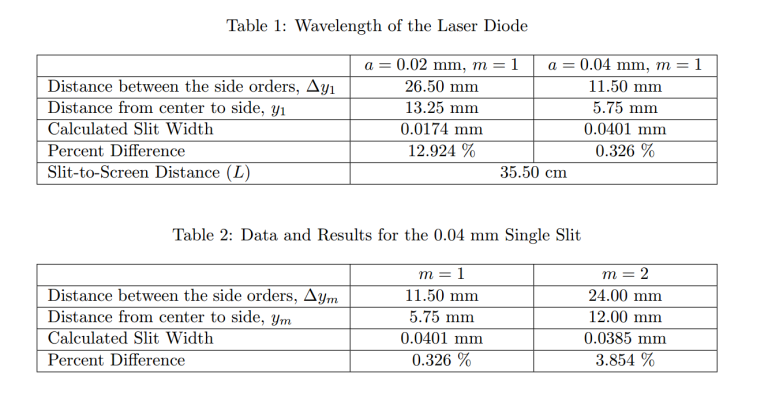
Relative to our other experiments our data shows significant percent error (for our standards) this is due to the dimness of the bright bands and the not so big distance L as compared to a. The second is a cause of error because of the assumption that L >> a.
The second part was the double slit experiment. 1st observation was that it had a lot more bands than the single slit (which was cool!! HAHA)
here are some pictures of the double slit experiment
(sorry btw pictures were kinda blurry for some reason my phone’s camera doesn’t focus properly during the experiment… :/)
The data gathered are compiled onto table 3 and 4.
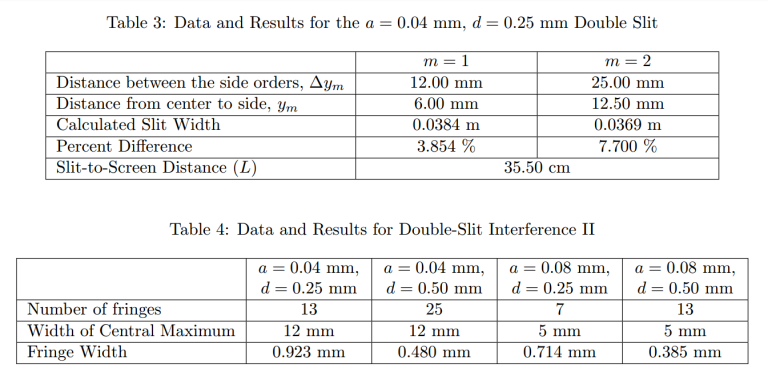
the second part of the experiment was coherent with theory, like the bands were less intense as you move away from the center and the number of fringes increases as d increases. Table 3 shows that you can use any nth order minima to obtain slit width. It would seem that everything is just a scaled version of another.
This whole experiment was pretty but it ain’t that fun. I dunno, for the longest time i really enjoyed playing with light ‘coz you see pretty things, but i was underwhelmed by this experiment. Maybe because this is not all that new to me since I’ve known and seen this in high school, so every thing was expected. If maybe it’s my first time to observe this i would really be super duper amazed. Maybe it’s that or maybe it was just the sh*tty morning i had that day. But oh well, seeing the pics it still amazes me, just not amused by the lack of prettiness the pictures had. HAHA HUHU
here are some extra pictures like how my groupmate marks the dark bands.
here’s a pic with my groupmates, maam and our adopted groupmate whose name i don’t know… HAHAHA
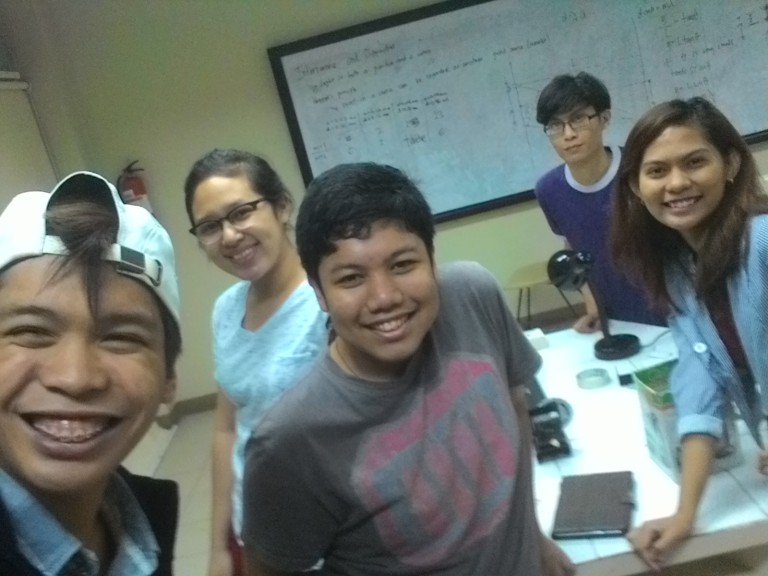
References and Acknowledgements:
- Chris Sevilla and Rigil Tabuzo – da best groupmates 5ever. answering all my questions and providing pretty pictures ❤
- Ms. Anjali Tarun – for deriving the equations needed (which i took a picture of coz i was too lazy to input them again. HAHA HUHU SORRY TAMAD :(( )
- http://paleocave.sciencesortof.com/2010/07/can-you-hear-me-or-are-you-cancelling-my-noise/ – for the pic of superposition of waves
- http://farside.ph.utexas.edu/teaching/302l/lectures/node150.html – for the statement of Huygen’s Principle
